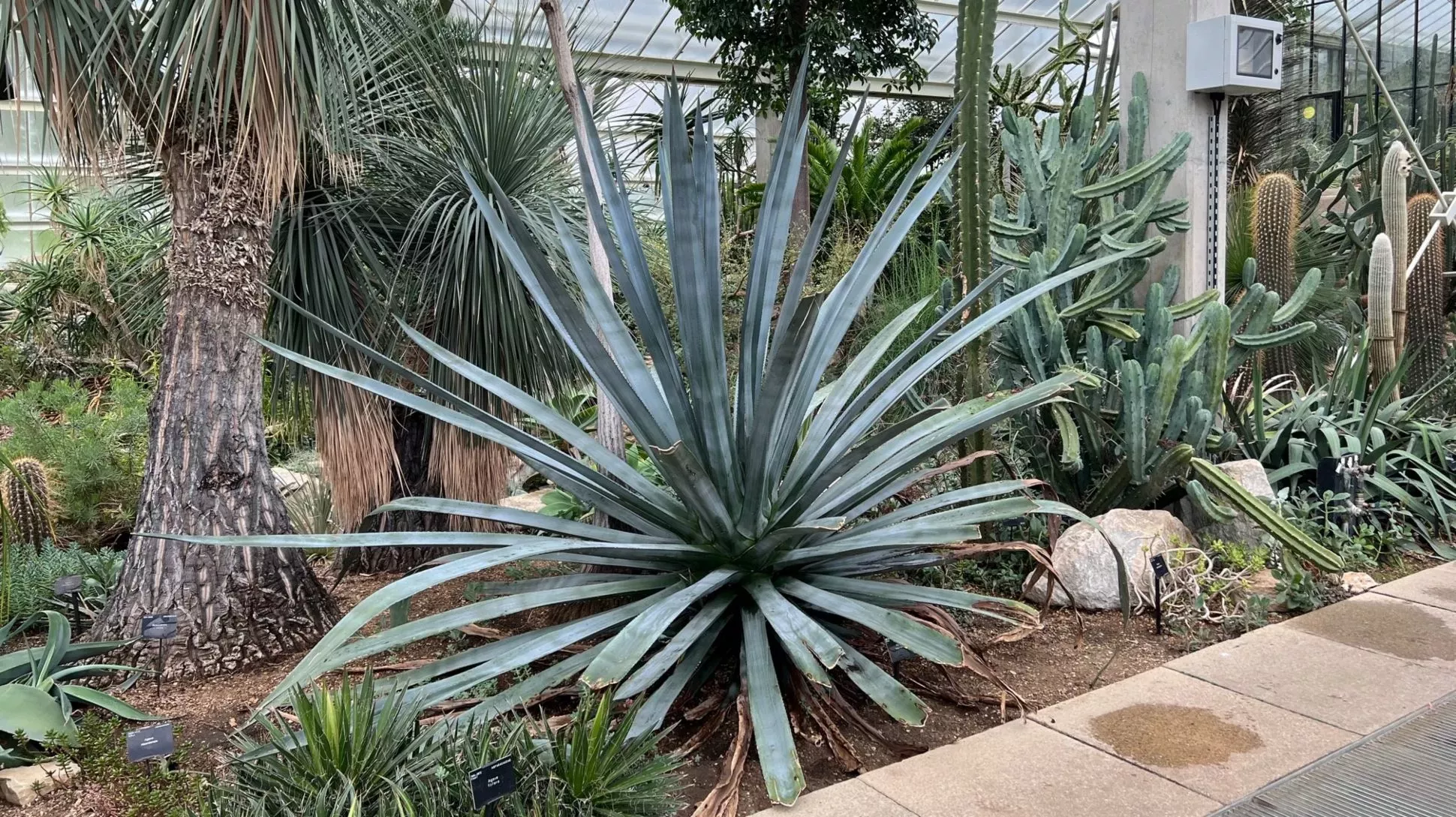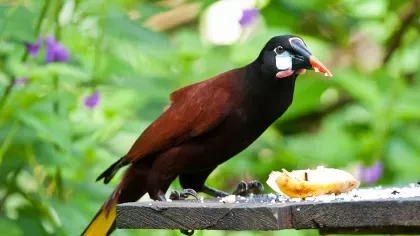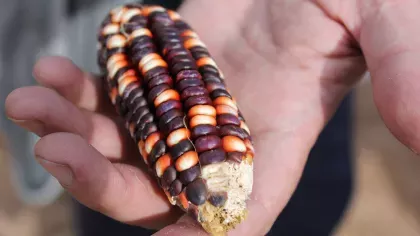12 October 2022
The Mexican plants of Kew
As Kew's Temperate House is transformed into a Dia de Los Muertos (Day of the Dead) extravaganza, explore some of the indigenous plants of Mexico growing across the Gardens.

Mexico is in full swing in the Temperate House, with vibrant art installations and immersive soundscapes bringing the colour and sounds of Mexico to Kew Gardens.
But you can find the spirit of Mexico all across Kew, in our Living Collections.
Here we explore the various Mexican plants at Kew, along with their cultural and culinary importance.
Mexican marigolds
‘The flower of the dead’, better known as the Mexican marigold, plays a key role in the annual Dia de los Muertos (Day of the Dead) festival.
The blooms are used to decorate altars to the dead, known as ofrendas, with their bright orange colour and strong scent thought to help guide spirits home.
Along with their cultural importance, Mexican marigolds have also been used in local medicines for hundreds of years, including remedies for fevers, colds and digestive problems.
Find Mexican marigolds in the Temperate House as part of the Mexico festival.

Prickly pear cactus
According to legend, the prickly pear played a key role in the foundation of the capital city of the Aztec empire. Tenochtitlan was founded where the wandering Aztec people saw an eagle eating a snake while standing on an Opuntia cactus. Today, the capital city Mexico City stands on the site of Tenochtitlan.
There are over 150 prickly pear species found across the world, but the Indian fig (Opuntia ficus-indica) is the most commonly cultivated prickly pear species across Mexico.
Both the pads of the cactus, known as nopales, and the fruits are used in a number of tasty meals.

Blue agave
On the west coast of Mexico, in the state of Jalisco, thousands of blue agave plants are grown for one of the countries’ most famous liquid exports: tequila.
Blue agave is harvested by jimadores, who use a tool called a coa to cut the leaves away from the core of the plant, known as the piña.
The piñas are then baked, pulped and juiced, then fermented and distilled, to produce silver tequila, which can be sold as is, or aged in wooden barrels to produce golden tequila.
Find both prickly pear cactuses and the blue agave in the Princess of Wales Conservatory.

Dahlia
The national flower of Mexico, the dahlia, has a proud history reaching back to the days of the Aztec empire. It was originally grown by the Aztecs as a food crop for their starchy root tubers.
When the dahlia was later transported back to Europe by Spanish colonists in the 18th century, it became a popular ornamental plant.
While there are only 42 species, there are over 57,000 different cultivated varieties registered with the Royal Horticultural Society, with a variety of different groups including 'Pompon’, ‘Cactus’ and ‘Double Orchid’.
Find dahlias across the gardens, including the Duke's Garden.

Peppers
Whether bringing the crunch to a salad or the spice to a chilli, the fruits of Capsicum annuum are as versatile as they are varied.
Bell peppers, chilli peppers, cayenne peppers and jalapeños are all varieties that come from the same species.
Oddly, they’re named peppers because Christopher Columbus wanted to market them as an alternative to peppercorns in Europe, which were an incredibly lucrative trade in the 15th century.

Tomatoes
One of the world’s favourite fruit, even if it is usually eaten as a vegetable, the tomato is a key part of countless recipes across the globe.
While it’s thought of as a quintessentially Italian food, the tomato traces its roots back to the indigenous peoples of South America and Mexico. It was originally introduced to Europe by Spanish colonists in the 16th Century.
As members of the nightshade family (Solanceae), tomatoes were suspected to be poisonous when brought to Europe, so were grown only as ornamental plants at first.
Both tomatoes and peppers can be found growing in Edible Science: Kew's Kitchen Garden.

Keep an eye out for all these fantastic Mexican plants when you visit Kew this autumn for our incredible Mexico festival in the Temperate House



